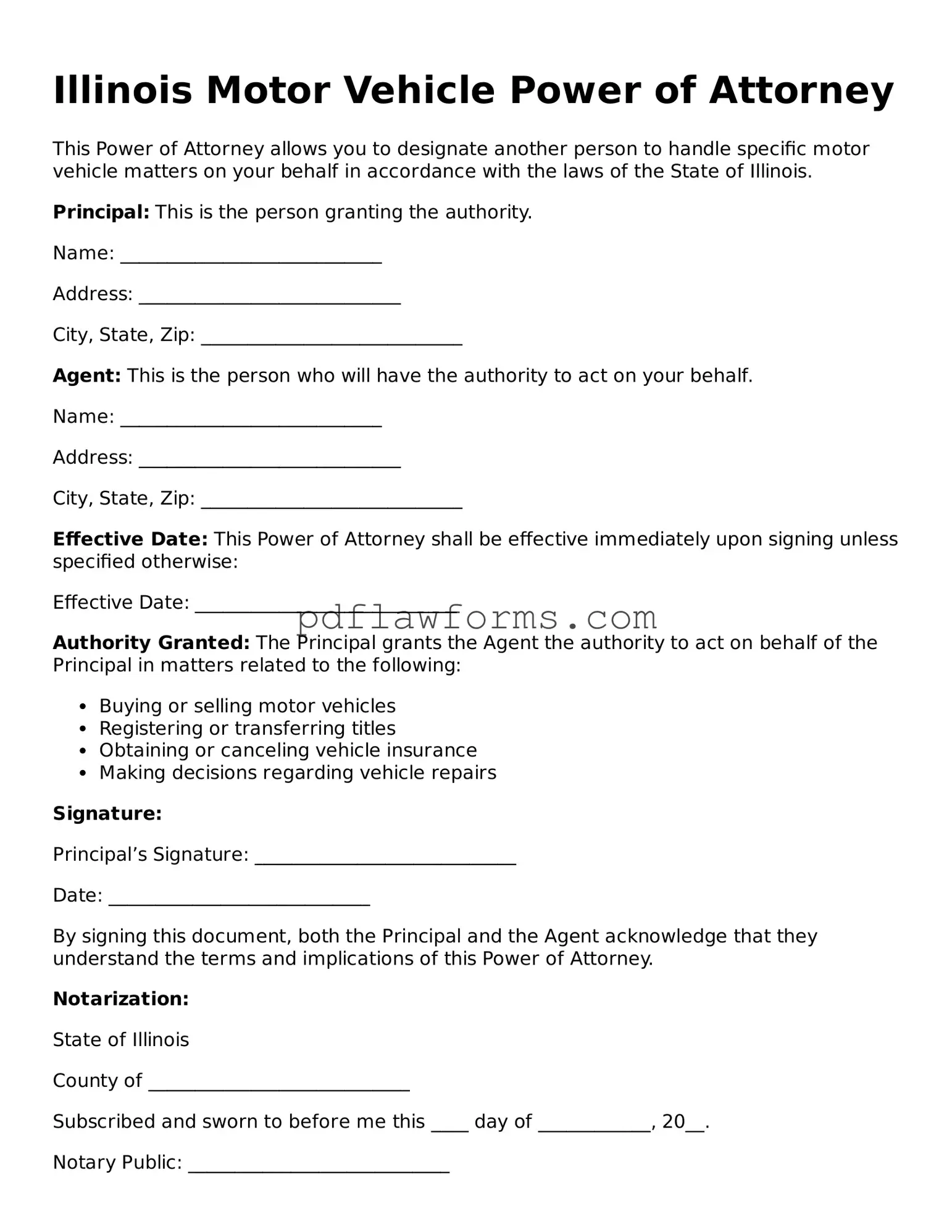The Illinois Motor Vehicle Power of Attorney form is a crucial document for anyone looking to delegate authority regarding their vehicle. This form allows an individual, known as the principal, to appoint another person, referred to as the agent, to act on their behalf in matters related to motor vehicles. This can include tasks such as transferring ownership, registering a vehicle, or handling title issues. By using this form, the principal can ensure that their vehicle-related affairs are managed by a trusted individual, especially in situations where they may be unable to do so themselves. The form requires specific information, including the names and addresses of both the principal and the agent, as well as details about the vehicle in question. It is important to note that the authority granted can be broad or limited, depending on the principal's preferences. Properly completing and signing this document can help streamline the process of managing vehicle transactions, providing peace of mind to the principal while empowering the agent to act efficiently and effectively.
